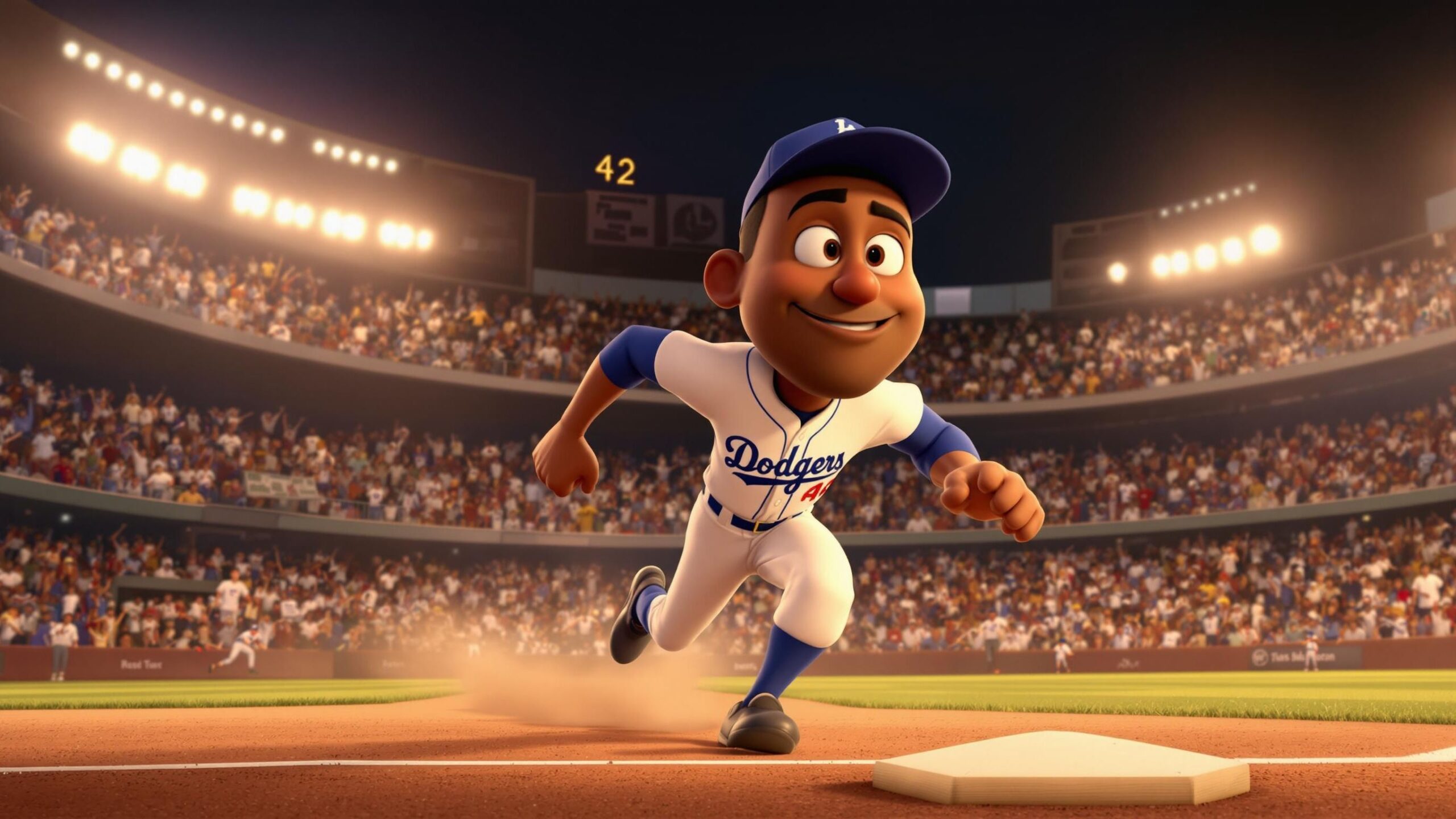Before Tiger Woods, golf was a game of quiet claps, tucked-in polos, and country club traditions. After Tiger Woods, it was a global spectacle—roaring crowds, electrifying fist pumps, and a young man in a red shirt dominating fairways like no one before him. Tiger didn’t just play golf—he reinvented it. With the power of an athlete, the focus of a chess master, and the cultural presence of a rock star, he transformed the image of what a golfer could be. From prodigy to powerhouse, his journey was equal parts triumph and turbulence, brilliance and bounce-back. He inspired millions, intimidated competitors, and made Sunday afternoons must-watch television. Tiger Woods turned golf into an adrenaline sport and himself into a living legend. This is the story of how one man changed the game forever—one swing at a time.
The Rise of a Golf Wunderkind
Long before he wore the iconic red shirt on Sundays, Eldrick Tont “Tiger” Woods was already rewriting the rules of what a golfer could be. By age two, he was swinging clubs on national television. By age five, he was featured in Golf Digest. This was no ordinary child. Trained by his father, Earl Woods—a retired Green Beret who believed in mental toughness as much as physical precision—Tiger wasn’t just learning how to play. He was being molded to dominate. Tiger’s rise in the junior golf circuit was meteoric. He won six consecutive Junior World Golf Championships and three consecutive U.S. Amateur Championships—something no one had ever done. His talent was undeniable, but what made him revolutionary was his swagger. Tiger brought intensity to the fairway, charisma to the green, and ferocity to a sport long known for its quiet demeanor. When he turned professional in 1996, his Nike endorsement came with a simple phrase: “Hello, World.” It wasn’t a greeting—it was a warning. The golf world would never be the same.
Breaking Records and Barriers
In 1997, just one year into his professional career, Tiger Woods won the Masters. And not just any win—he did it by a staggering 12 strokes, the largest margin in tournament history. At just 21, he became the youngest Masters champion and the first Black golfer to win one of golf’s most prestigious titles. The green jacket was his, but more importantly, he’d shattered the invisible barriers that had kept the sport so exclusive. Tiger wasn’t just winning—he was redefining excellence. By the early 2000s, he held all four major championships at the same time, a feat dubbed the “Tiger Slam.” His power off the tee was seismic. His iron play was surgical. And his putting? Ice-cold clutch. Crowds swarmed to see him, television ratings soared, and suddenly, golf wasn’t just a sport—it was must-see TV. Beyond the stats, Tiger brought diversity to a sport that needed it. Young athletes of all backgrounds saw themselves in him. Golf courses once resistant to change began to evolve. Equipment changed. Course designs were “Tiger-proofed” to keep up with his monstrous drives.
The Red Shirt and Sunday Roars
Tiger’s final-day uniform—red shirt, black pants—became the stuff of legend. The red wasn’t random. His mother, Kultida, told him red was a power color, and he made it his trademark. Whenever Tiger teed off on Sunday wearing that blazing crimson top, fans knew something dramatic was about to unfold. He had a knack for turning pressure into performance. Clutch shots from impossible lies. Birdie putts when the tournament hung in the balance. The 2008 U.S. Open was perhaps the most Tiger-esque of them all. Playing on a torn ACL and stress fractures in his leg, he forced a playoff with a jaw-dropping putt on the 72nd hole. The next day, hobbling with every swing, he beat Rocco Mediate in a sudden-death playoff. It was part myth, part miracle—and 100% Tiger. His fist pumps were electric. His stares, intense. When Tiger was on a roll, the gallery roared like it was a football stadium. No one had ever brought this kind of energy to golf before. He made it visceral. He made it cool.
The Downfall That Shocked the World
Tiger’s rise was meteoric, but so was his fall. In 2009, a personal scandal unraveled the image he’d built so carefully. The golden boy of golf, known for discipline and precision, suddenly found himself at the center of tabloid headlines. Sponsors fled. His marriage collapsed. And perhaps most devastatingly, his body began to betray him. Surgeries piled up—back, knees, and more. His swing changed, then changed again. Doubts crept in. Could he ever be Tiger again? The years that followed were painful—for Tiger and for his fans. He struggled to make cuts. He dropped in the rankings. Critics said he was done. But even in his darkest hours, Tiger never quit. He kept grinding, kept rehabbing, and kept believing. And those who watched closely saw glimpses of the fire still burning.
The Legendary Comeback at Augusta
If Tiger’s downfall was dramatic, his comeback was pure cinematic glory. In April 2019, at age 43 and nearly a decade removed from his last major win, Tiger Woods shocked the world by winning the Masters again. The emotion was raw, the embrace with his son Charlie mirrored the iconic hug he’d once shared with his own father in 1997. It was full circle. This wasn’t just a win—it was a resurrection. Sportswriters called it the greatest comeback in sports history. Fans wept. Golfers across generations paid tribute. And suddenly, Tiger wasn’t just a legend—he was a miracle. Augusta National, with its azaleas and reverent quiet, had never sounded louder. The Sunday roars were back, and so was the man who inspired them. It was as if time bent just to witness his return to greatness.
Tiger’s Impact Beyond the Scorecard
Tiger Woods didn’t just change golf’s record books—he changed its soul. Before him, golf was often viewed as a game of the elite. After him, it became global, diverse, and fiercely competitive. He brought in new fans, new money, and new energy. He inspired a generation of golfers who grew up mimicking his swing, emulating his focus, and chasing his intensity. Players like Rory McIlroy, Brooks Koepka, and Justin Thomas all cite Tiger as a primary influence. Even players who once competed against him, like Phil Mickelson, acknowledged his unparalleled impact. Off the course, Tiger’s foundation has funded scholarships, built learning centers, and empowered underserved youth. He’s used his platform for more than just trophies. His TGR Foundation focuses on education, especially in STEM, showing Tiger’s vision stretches beyond fairways and greens. His influence even reached fashion—golf apparel became bolder. His clubs and gear sales skyrocketed. Every young kid at the driving range wearing a red Nike polo and swinging like a whirlwind? That’s Tiger’s legacy, too.
Reinventing the Game—One Swing at a Time
Tiger’s swing went through countless evolutions—partly due to injury, partly due to constant improvement. Early in his career, his swing was raw and violent. Later, it became more controlled, more strategic. Each iteration sparked endless debate among coaches, commentators, and fans. But at every stage, it was unmistakably his. The torque. The rhythm. The balance. Tiger turned the golf swing into an art form, blending athleticism with grace. He made people see golf as a sport that demands power, coordination, and elite fitness. Fitness in golf became the new norm because of Tiger. Before him, many golfers were casual about conditioning. After him? Training regimens, gym routines, and sports science became standard practice. He changed the athlete behind the golfer.
A Global Ambassador and Cultural Icon
Tiger Woods was never just a golfer. He was a phenomenon. The kind of name recognized worldwide like Jordan or Ali. He made golf prime-time. He made it marketable. He played in countries where golf had little following, drawing crowds by the thousands. In Asia, where his mother’s heritage gave him added resonance, Tiger opened new doors for the sport. His presence on the PGA Tour helped internationalize the game in ways never seen before. And let’s not forget video games. Tiger Woods PGA Tour became a best-selling franchise, introducing golf to kids who’d never picked up a club. He wasn’t just on the course—he was in living rooms everywhere, making birdies and eagles with a joystick. Even his setbacks made him relatable. For all his trophies, Tiger’s imperfections—his public fall, his painful surgeries, his human struggles—made his story richer. He became a mirror of resilience.
The Future of Tiger Woods and His Legacy
Today, Tiger is no longer chasing every tournament. Injuries have taken a toll. His appearances are selective. But when he does tee it up—whether in a major or in an exhibition with his son—millions still tune in. His legacy is firmly cemented, but it’s also evolving. As a mentor, as a father, as an architect of golf’s future, Tiger Woods continues to shape the sport. He’s building courses. He’s supporting junior golf. He’s sharing his wisdom with the next generation. And when Charlie Woods swings a club, the resemblance is uncanny. It’s like watching time rewind. Whether Charlie follows his dad’s footsteps fully or not, the symbol is powerful: Tiger’s story isn’t ending—it’s echoing.
More Than a Golfer
Tiger Woods will be remembered for his stats: 82 PGA Tour wins, 15 majors, hundreds of records. But he’ll be celebrated for something deeper. For changing how golf looks, feels, and sounds. For pushing past barriers, inside and out. For getting kids excited to play a sport with no time clock and no roaring crowds—until he brought them. He made golf epic. He made it urgent. And he made sure no one would ever call it boring again.




